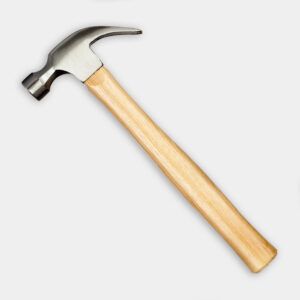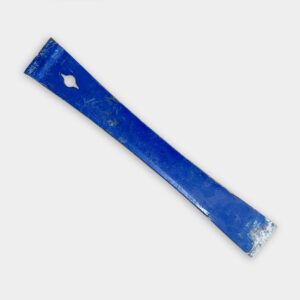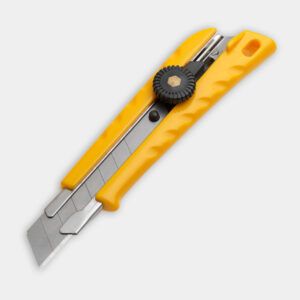Project details
Skill
Cost
Estimated Time
We may be compensated if you purchase through links on our website. Our team is committed to delivering honest, objective, and independent reviews on home products and services.
Insulating windows with sash weights is an effective way to improve your home’s energy efficiency and comfort. This simple project can help reduce drafts, lower energy bills, and create a more comfortable living environment. In this guide, we’ll walk you through how to insulate a window with sash weights. This Old House general contractor Tom Silva explains the process in the video above.
Preparing for the Window Insulation Project
Before beginning the insulation process, gather the necessary tools and materials.
Tools and Materials Needed
To insulate a window with sash weights, you’ll need:
- Adhesive-backed foil tape
- Flat pry bar
- Foil-faced rigid foam insulation
- Hammer
- Maximum-expanding polyurethane foam sealant
- Rubber carpet padding
- Safety glasses
- Utility knife
- Work gloves
Safety Precautions
When working on any home improvement project, safety should be a top priority. Here’s some guidance:
- Check for proper ventilation when using spray foam insulation
- Follow manufacturer instructions for all materials and tools
- Use work gloves to avoid cuts and splinters
- Wear safety glasses to protect your eyes from debris
Step-by-Step Window Insulation Process Using Sash Weights
Follow these steps to effectively insulate your sash weight window.
Removing the Window Trim
First, remove the trim:
- Use a hammer and pry bar to carefully remove the molding from around the window.
- Work slowly to avoid damaging the trim or surrounding wall.
- Set the trim aside for later reinstallation.
Preparing the Insulation
Now you can prepare the insulation as follows:
- Cut a strip of foil-faced rigid foam insulation to fit snugly into the space between the side jamb and plaster or drywall.
- Measure twice to check for a proper fit.
- Use a utility knife for precise cuts.
Applying Foam Insulation
Apply the insulation as follows:
- Use maximum-expanding polyurethane foam sealant to fill gaps at the bottom and top of the window’s side jamb.
- Apply the foam carefully, as it will expand significantly.
- Allow the foam to cure according to the manufacturer’s instructions.
Installing Rigid Foam Insulation
You can now install the rigid foam insulation:
- Press the strip of foil-faced insulation into place alongside the side jamb, flush with the wall.
- Check for a snug fit to maximize insulation effectiveness.
- Repeat the process for the opposite side jamb.
Sealing the Insulation
Here’s how to seal the insulation:
- Cover the seam between the rigid foam insulation and the wall with adhesive-backed foil tape.
- Smooth out any bubbles or wrinkles in the tape for a proper seal.
- This step helps create a continuous air barrier.
Insulating the Pulley System
Now insulate the pulley system:
- Locate the hole where the sash cord meets the pulley.
- Cut a small strip of rubber carpet padding to fit this opening.
- Insert the padding to plug the hole, creating a seasonal insulation solution.
Reinstalling the Trim
Finally, reinstall the trim:
- Carefully replace the molding around the window.
- Use finishing nails to secure the trim in place.
- Fill any nail holes with wood putty and touch up with paint if necessary.
Additional Sah Weight Window Insulation Tips
While insulating the sash weight pockets, think about these additional measures to further improve your window’s energy efficiency.
Weatherstripping
Apply weatherstripping around the window sash to reduce air leakage:
- Choose appropriate weatherstripping for your window type
- Clean the surface thoroughly before application
- Replace weatherstripping annually or as needed
Window Treatments
Improve insulation with energy-efficient window treatments:
- Add exterior shutters for additional protection
- Install cellular shades for added insulation
- Use heavy drapes to reduce heat loss in winter
Seasonal Maintenance
Regular maintenance helps maintain your insulation’s effectiveness:
- Check for air leaks annually
- Inspect and replace damaged weatherstripping
- Reapply caulk or sealant as needed
Benefits of Insulating Sash Weight Windows
Properly insulating your sash weight windows offers numerous advantages, including the following.
Energy Savings
Insulated windows reduce your energy bills by doing the following:
- Improves overall HVAC system efficiency
- Minimizes heat loss in winter
- Reduces cooling costs in summer
Increased Comfort
Insulation improves your living environment with these benefits:
- Decreases outside noise infiltration
- Maintains more consistent indoor temperatures
- Reduces drafts and cold spots near windows
Preservation of Historic Windows
Insulating sash weight windows allows you to maintain the charm of your older home while improving its efficiency. You’re able to:
- Avoid the cost of full window replacement
- Improve the performance of existing windows
- Retain original architectural features



